Where are 360 ads shown
Platforms dictate where viewers encounter these immersive experiences , shaping content strategy significantly. Social feeds demand instant engagement; creators craft content grabbing attention within seconds, often relying on text overlays catering sound-off viewing habits. Contrast this a 360 Ad Video on a brand website, where visitor intent sits higher, permitting longer, deeper dives showcasing product features functionality effectively. Strategists match content depth platform viewing environment, ensuring message resonates desired outcomes.
Maximizing impact involves understanding how people interact within the panoramic space. Analyzing viewer movement provides crucial insights. Where viewers linger, where interest drops, helps refine content strategy. Incorporating social proof builds trust rapidly; flashing recognizable client logos or sharing user success metrics enhances credibility viewers decide engagement. This data-driven approach ensures resources focus areas yielding highest return.
Continuous optimization refines performance over time. Tailoring calls action specific viewer next steps yields superior results compared generic prompts. " Start Your Free Trial " converts better than broad "Learn More" when video targets evaluation stage. Measuring ROI tracks production costs against tangible value gained, like increased qualified leads reduced support calls. A/B testing different elements identifies optimal combinations audience resonates strongest.
Using viewer perspective in 360 ads
Understanding how viewers engage within panoramic experiences transforms how creators build narratives. They meticulously craft scenes, anticipating the unique journey each individual takes exploring the space. Clear objectives guide design choices, influencing everything from initial hooks to final prompts aimed at specific actions.
Maximizing impact necessitates focusing on measurable outcomes. Tracking costs against generated value helps gauge true effectiveness, measuring conversions or even the reduction in support requests when complex information is clearly conveyed. Presenting solutions in real-world scenarios makes content relatable, showing seamless integration into existing tasks or workflows viewers already understand. This builds immediate value recognition. Designing for viewer perspective differs whether creating a focused 360 educational video aimed at feature understanding or a broader 360 marketing video designed to spark initial interest and drive clicks.
Analyzing exactly where viewers look and linger within the 360 space offers unparalleled insight. Heatmaps reveal areas of interest or confusion, guiding iterative improvements. Incorporating social proof subtly builds confidence. Experimentation through A/B testing different elements refines performance. Adapting content length and style for different contexts like a quick social feed scroll versus a dedicated product page visit ensures messages land effectively.
- Craft compelling calls to action directly linked to video's purpose.
- Align CTA wording with the viewer's likely stage in their journey, using action-oriented language.
- Utilize viewer behavior analytics like attention data to pinpoint confusing segments or points where interest drops.
- Incorporate social proof like logos or user statistics to build credibility quickly.
Strategic design focusing on the viewer's interactive experience drives meaningful engagement and achieves campaign goals.
Building spatial narrative in 360 ads
Building spatial narrative in 360 ads means more simply creating immersive scenes. It requires strategic intent guiding viewer attention driving measurable outcomes. Success hinges marrying creative spatial design with performance-focused techniques. Readers understand basic immersive potential now focus shifts maximizing that potential achieving specific business results.
Guiding viewers navigating the virtual space proves paramount. Clear specific calls action prove vital end video experience. Move past generic prompts like "Learn More". Employ action-oriented text resonating viewers journey video objective. Phrases such as "Start Your Free Trial" "Request Demo" or "Download Report" provide tangible next steps relevant the content. Applying these strategies works across different immersive formats whether creating a product 360 showcase video or complex animated 360 video for conceptual ideas.
Measuring impact extends beyond simple views. Assess return investment tracking production costs against value generated. Key metrics for success include increased qualified leads shortened sales cycles or reduced support tickets resulting viewer understanding. Demonstrate product features within relatable real-world scenarios. Showing product integration existing workflows industry specific problems significantly increases its perceived value viewers. Incorporating social proof builds credibility quickly perhaps brief display known company logos mentioning satisfied user statistics.
- Analyzing viewer behavior provides deep insights. Heatmaps attention-tracking tools reveal exact segments watched rewatched skipped identifying confusing points areas interest drops guiding optimization efforts.
- Briefly display known company logos mention satisfied user statistics within narrative or overlay reinforces confidence builds trust.
- A/B testing different video elements yields valuable data. Experiment with thumbnails initial content CTA wording placement script variations revealing audience resonance driving conversions.
- Optimize videos different platforms considering viewer intent viewing environment. Adapt social media versions for quick attention sound off capability shorter length product pages allow more detailed content assuming higher viewer intent.
Implementing these strategies transforms immersive scenes compelling spatial narratives delivering tangible business value.
Boosting viewer engagement in 360 ads
Building on the understanding gained from viewing various examples, enhancing viewer interaction within these immersive experiences requires deliberate strategic focus . Marketers find success moving beyond simply showcasing the environment; they must actively guide attention and motivate subsequent actions. This involves careful planning from initial concept through analyzing performance metrics, ensuring each creative decision contributes meaningfully to connection and desired outcomes.
Implementing specific calls to action proves vital at the segment's conclusion. Rather than vague directions, action-oriented text like "Start Your Free Trial" or "Request a Demo" resonates more strongly, aligning with viewer intent and campaign goals. Measuring return involves tracking production investment against tangible value generated, such as acquiring more qualified leads or reducing support volume because viewers better understood features presented. Analyzing a particular 360 Ad Video example demonstrates how these clear calls drive measurable results.
Showing product or service features using relatable, real-world scenarios significantly boosts credibility. Demonstrating integration into existing user workflows helps audiences envision personal benefit. Analyzing viewer behavior through heatmaps and attention tracking offers invaluable insights into what captures interest or where engagement drops off. Incorporating social proof, like glimpses of well-known client logos, quickly builds trust. Every effective 360 ad video example utilizes these elements to foster deeper connection.
- Employ A/B testing on elements such as thumbnail images or the initial seconds of content to identify what initially attracts viewers most effectively.
- Test variations in the wording or placement of calls to action to optimize click-through rates.
- Slightly alter script elements or visual cues across different versions to see which creative approaches resonate best.
- Adapt content length and style for diverse platforms, ensuring the video remains effective even without sound on social feeds through text overlays for platform optimization .
Crafting the 360 ad viewer journey
Crafting the 360 ad viewer journey involves intentionally guiding engagement beyond initial immersion. They must think strategically about every touchpoint, ensuring the experience moves viewers towards a desired outcome. This means carefully designing how audiences interact and what actions they are encouraged to take next.
Clear, specific calls to action are paramount at the journey's conclusion. Move beyond vague requests; instead, use action-oriented language. Think "Request a Demo" or "Start Your Free Trial," aligning the prompt directly with the video's objective and where viewers stand in their decision process. Measuring success requires tracking the investment against the value generated. Quantify this through metrics like increased qualified leads, a shorter sales cycle from better-informed prospects, or reduced support inquiries because users understood features clearly.
Presenting real-world scenarios makes content more relatable and believable. Demonstrating solutions within relevant contexts, showing product integration into workflows, or highlighting how it solves specific daily tasks increases perceived worth. For a 360 educational video example, this approach clarifies practical benefits instantly. Analyzing viewer behavior using heatmaps and attention tracking reveals exactly which parts resonate most, identifying confusing segments or points where interest declines. Incorporating social proof, like displaying well-known client logos or user statistics, builds quick credibility and trust. For a 360 marketing video example, this trust is vital for conversion.
Conducting A/B testing on various video elements yields significant insights. Test thumbnails, initial content, CTA wording or placement, or slight script variations. This reveals what truly resonates and drives higher conversions. Optimizing for different platforms means considering viewer intent and environment. Videos for social feeds need immediate hooks and silent understanding via text overlays. Conversely, content on a product page can be longer, assuming higher viewer intent.
- Design specific, action-oriented CTAs based on the viewer's stage.
- Measure ROI through quantifiable value like leads generated or efficiency gains.
- Use real-world scenarios and integration examples for relatability.
- Analyze viewer behavior data to identify engagement patterns.
- Build credibility quickly with social proof elements.
- A/B test video elements for maximum audience resonance and conversion.
- Optimize content strategy for specific platform contexts and viewer intent.
Implementing calls to action in 360 ads
Within the immersive world of 360 ad videos, guiding viewer action is paramount. For these experiences, clear and specific calls to action become vital compasses, directing the audience toward the next desired step. They should move beyond vague prompts, utilizing action-oriented text directly relevant to the video objective and where viewers are in their decision journey. Phrases such as "Start Your Free Trial," "Request a Demo," or "Download the Report" offer precise direction, significantly impacting conversion rates.
Measuring the return on investment for a 360 ad video campaign involves tracking production expenses against the value generated. This value manifests in various ways, including an increase in qualified leads, a reduction in the sales cycle length through better-informed prospects, or a decrease in support requests from users who gained feature understanding from the video. Analyzing viewer behavior provides deeper insights into performance.
Using tools like heatmaps and attention tracking integrated with video players allows for detailed analysis of which parts of a product tour viewers engage with most, rewatch, or skip entirely. This granular data proves invaluable for pinpointing confusing sections or moments where viewer interest wanes. Incorporating social proof, perhaps showing well-known company logos using the product or sharing statistics about satisfied users, quickly builds credibility and trust within the immersive experience. For businesses looking to highlight a physical space or product in detail, a 360 showcase video example offers viewers an immersive exploration opportunity.
- Optimizing performance across different platforms necessitates considering viewer intent and their environment.
- Videos for social feeds need immediate attention-grabbing elements and often function without sound, favoring shorter durations.
- Conversely, a video embedded on a product page assumes higher viewer intent, allowing for slightly longer, more detailed content.
- Alternatively, for explaining complex concepts or demonstrating software visually, an animated 360 video example can simplify information while retaining interactive elements.
A/B testing different elements of the 360 ad video proves insightful for understanding audience resonance and driving higher conversions. Experimenting with thumbnail images, initial content, CTA wording or placement, and even script variations can yield significant performance improvements. This iterative optimization process, guided by viewer behavior data, helps refine future campaigns.
Strategic ad placement within 360 spaces
Achieving impactful results demands thoughtful strategic placement. Clear calls action pivotal video conclusion. Action-oriented phrases like "Start Free Trial" or "Request Demo" connect directly desired viewer movement. Generic "Learn More" lacks punch. Align text video goal viewer stage journey.
Success measurement involves tracking costs generated value. Value appears increased qualified leads shorter sales cycles better-informed prospects. Fewer support requests users understanding features demonstrates video impact. Use real-world scenarios demonstrating product capabilities context. Show product fits workflows solves industry specific problems raises value perception.
Analyze viewer interactions using heatmaps attention tracking. Data shows video parts viewers watch rewatch skip. Granular insight pinpoints confusion spots interest decline areas. Consider this a 360 Ad Video sample researchers study viewer behavior. Incorporate social proof enhancing trust credibility. Display logos well-known users mention satisfied user numbers. Social proof builds credibility trust rapidly viewers. Implementing optimized strategies transforms each 360 ad video sample powerful conversion tool.
- Test different video aspects through A/B testing.
- Thumbnail image first content seconds all yield insights.
- A/B test CTA placement wording script variations.
- Optimize platforms considering viewer intent environment.
Understanding viewer gaze paths in 360
Understanding how audiences navigate immersive spaces proves crucial for capturing and holding attention. Unlike traditional video where creators dictate the view, 360 content empowers viewers, allowing them to explore the scene. This shift necessitates new approaches to measure engagement, moving beyond simple metrics to analyzing where viewers actually focus their gaze. Utilizing tools that track attention provides valuable insights into viewer behavior within the spherical environment.
Analyzing viewer pathways helps reveal compelling areas within a video and pinpoint sections where interest might wane. This granular data informs content refinement, ensuring key messages and visuals fall within common lines of sight. For example, insights gained from a 360 educational video sample can highlight whether complex demonstrations are viewed thoroughly, while data from a 360 marketing video sample shows if viewers dwell on product features or calls to action. This focus on viewer exploration transforms raw view data into actionable intelligence.
Maximizing the effectiveness of 360 video demands strategic application of these insights. Optimization involves carefully placing essential information and calls to action where viewers are most likely to see them. Tailoring content for platforms like social media versus dedicated product pages also impacts design; social feeds might prioritize immediate visual hooks understandable without sound, perhaps using text overlays, while product pages can accommodate deeper dives. Applying an experimental mindset further refines approach.
- Employ specific, action-oriented calls to action that clearly guide viewers next steps after watching.
- Measure return on investment by tracking tangible business results like generating qualified leads or decreasing support inquiries.
- Incorporate social proof, such as displaying relevant company logos or user statistics, to quickly build trust and credibility.
- Systematically test different video elements, including thumbnails, initial content, or call to action wording, to identify peak performance configurations.
Understanding the viewer's journey within a 360 space unlocks the potential to create more impactful and results-driven immersive video experiences.
Integrating brand naturally into 360 scenes
Integrating brands naturally into 360 scenes requires deliberate strategy extending far beyond initial creation. Creators focus integrating brand messaging seamlessly delivering genuine value viewer. Success hinges understanding viewer interaction refining approach data drives performance objectives. This involves careful consideration strategic elements ensures message resonates compels action within the spherical canvas.
Effective execution demands sharp focus viewer journey aligning content their needs stage interaction. Building connection involves demonstrating relevance product service viewers world showing tangible benefits use provides. Leveraging third-party validation reinforces trust solidifies brand credibility viewers minds.
Achieving measurable success involves defining clear targets tracking outcomes generated video interactions. Optimizing distribution maximizes impact ensures content reaches intended viewers contexts most receptive message.
- Crafting impactful calls to action guides viewers next steps. Final prompts align specifically audience stage journey ensuring relevance drives conversion. Specific action-oriented text outperforms generic requests significantly boosting engagement outcome.
- Measuring real business metrics quantifies investment return. Track key indicators like leads generated sales cycle length reduction customer support case decrease attribute directly video performance. Compare production costs generated value understand precise efficiency.
- Designing authentic product demonstrations builds understanding belief. Present products services real-world scenarios illustrate seamless integration existing workflows. Showcasing how solutions address specific industry challenges daily tasks increases perceived worth. Reviewing a compelling 360 showcase video sample highlights potential realistic presentation.
- Optimizing performance through analysis adaptation refines viewer experience. Utilize behavioral analytics tools pinpoint areas high engagement drop-off confusion. Systematically test different video elements like intros calls action placement or messaging. Examining an animated 360 video sample can reveal methods simplifying complex processes or abstract concepts effectively. Adapt video length style platforms ensuring quick impact social feeds detailed exploration owned channels.
Continuous refinement iterative process based data analysis testing ensures 360 video efforts yield maximum return evolve changing audience behaviors platform dynamics.
Gauging 360 ad effectiveness
Moving beyond initial excitement about immersive experiences, understanding how a 360 Ad Video idea translates into tangible results becomes critical. measuring effectiveness requires a strategic approach, focusing on clear objectives defined early in the planning stage. Success hinges on more than just views; it involves tracking meaningful interactions and their impact on business goals. Optimizing for different platforms means considering how viewers engage within various digital environments, influencing both content and calls to action. Analyzing performance provides valuable insights, guiding the evolution of every subsequent 360 ad video idea.
For those aiming to gauge the true impact, relying solely on surface-level metrics falls short. Effectiveness is tied directly to conversion, however defined for a specific campaign. Specific, action-oriented calls to action are paramount, guiding viewers toward the next step, whether it is exploring a product detail or initiating a trial. These prompts should align seamlessly with the immersive experience.
- Measuring ROI involves comparing production costs against the value generated. This value might manifest as improved lead quality, a shortened sales cycle due to better-informed prospects, or even reduced customer support inquiries as users gain clarity from detailed product tours.
- Deep dives into viewer behavior using tools like heatmaps reveal precisely which areas within the 360 space capture attention . This granular data pinpoints compelling elements and identifies points where engagement wanes.
- Incorporating social proof, such as recognizable client logos or user statistics, builds immediate trust and credibility, influencing viewer perception and potential action within the immersive environment.
- Rigorous A/B testing of elements like introductory seconds, CTA placement, or even subtle narrative shifts provides concrete data on what resonates most powerfully with the target audience, directly impacting conversion rates.
Employing these measurement techniques empowers marketers to move beyond speculation, refining their approach to consistently achieve stronger outcomes from immersive campaigns.










